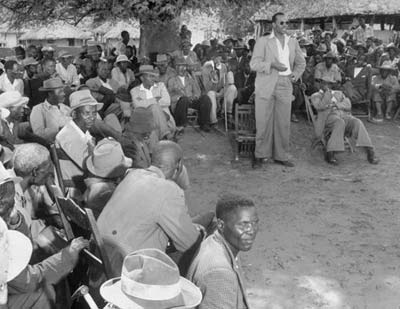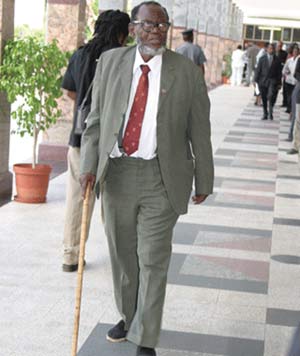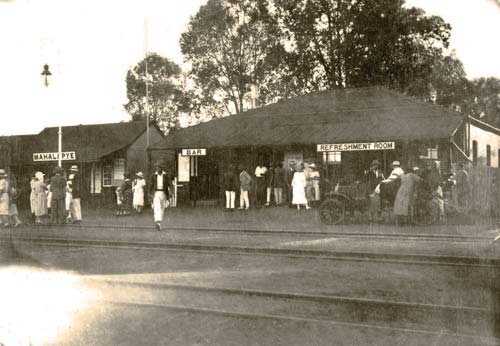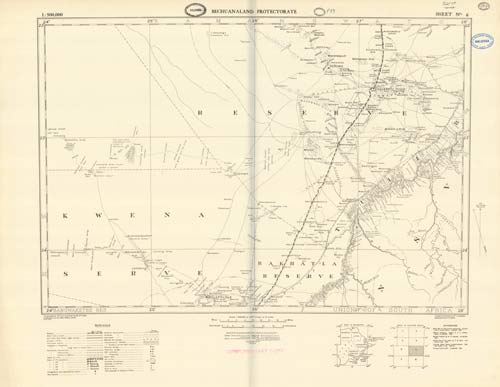Seretse Khama & Goareng Mosinyi
Goareng Mosinyi was born in Shoshong in 1915, a member of both the Bakaa and Bangwato royal families, and was sent to the Tiger Kloof school in South Africa, established in 1904 by the Rev Willoughby.
As a child Seretse Khama spent several years at Tiger Kloof with Goareng, before attending the University of Fort Hare. In 1945 he travelled to England, spending a year at Oxford University and then training to be a barrister in the Inner Temple, London. Here he met Ruth Williams and they decided to marry.
While Tshekedi Khama and many others were against Seretse marrying a white English woman, Goareng supported Seretse in his choice.
In 1949 Seretse visited Serowe, and was able to persuade people at the kgotla to accept his decision. Tshekedi, together with Gorewang and Rasebolai went into self imposed exile in Pilikwe, while Seretse returned to the UK to resume his studies.
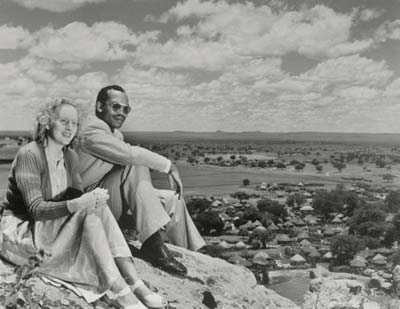
Seretse and Ruth Khama photographed above Serowe by Margaret Bourke-White in 1950. Images © Getty Images, reproduced under “fair use” guidines for non-profit educational purposes.
In 1953 Rasebolai was appointed by the British authorities as African Authority over the Bangwato, despite having previously been rejected by the kgotla. He kept this position until 1964, achieving widespread support following the reconciliation between Seretse and Tshekedi. [1] When accepting this appointment, Rasebolai renounced his claim to the Shoshong governorship, and his cousin Setohile was installed in his place, a position he kept until his death in 1970. [2]
During a visit to South Africa in 1960, the British Prime Minister Harold Macmillan made his speech about the “winds of change” blowing through Africa, and in the light of this it was not unexpected that the British turned down South Africa’s request to take over the Bechuanaland Protectorate in 1963.
In 1961, Seretse together with Goareng and others founded the Botswana Democratic Party (BDP), which would dominate the Botswana political scene for the next fifty years.
Mahalapye
The town of Mahalapye was established on the railway line some 40 km east of Shoshong. In 1922 it had only three wards, but access to transport, labourers, possibility of jobs and proximity to cattle posts and arable lands led to its rapid growth. Mahalapye is unique in not having an indigenous ruling family – instead lots of different tribes settled there including Herero, Xhosa and others as well as Bangwato.
As Mahalapye developed, the main access into Shoshong became the road from Mahalapye, although the road due South from Shoshong, called the “Tale Road“, intersecting the railway around Mamabula could still be used.
References
[1] Morton F, Ramsey J & Mgadla PT (2008) “Historical Dictionary of Botswana"[2] Seretse Gasebalwe (2013) “Kgamane clears mist on Shoshong chieftaincy.” Mmegi Aug 9 2013
[3] Kebonang B.B (1989) “The History of the Herero In Mahalapye, Central District: 1922-1984” Botswana Notes & Records Vol 21 (1989)
[4] National Census 2011 http://www.cso.gov.bw/.

